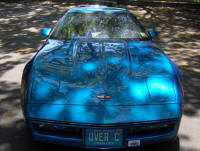RIKLBLOG
|
| Tomorrow |
| 13 April 2009 |
| Yesterday |
| Index |
| Eventide |
| SETI League |
| PriUPS Project |
| Bonus! |
| Contact |


You Can Buy A Lot Of Screwdrivers For $100,000
Life as You Know it is Over
At least for this blogitem. Go about your business and come back tomorrow if you dare. Today we are going to talk eBay. And worse, spectrum analyzer. I've had a love affair with spectrum analyzers since my remote youth. A few days ago I bought one on eBay. It was special. To begin with, it was made by Rohde and Schwarz, a German company that shares with Hewlett-Packard (now Agilent) the reputation for making the best test equipment in the world. R&S surpasses HP, which often stands for "High Prices" in a surprising way: Their prices are even higher! So you won't be shocked, perhaps, when I tell you that you can easily spend $100,000 dollars on a R&S spectrum analyzer. If you did, you'd get one that looks something like this.
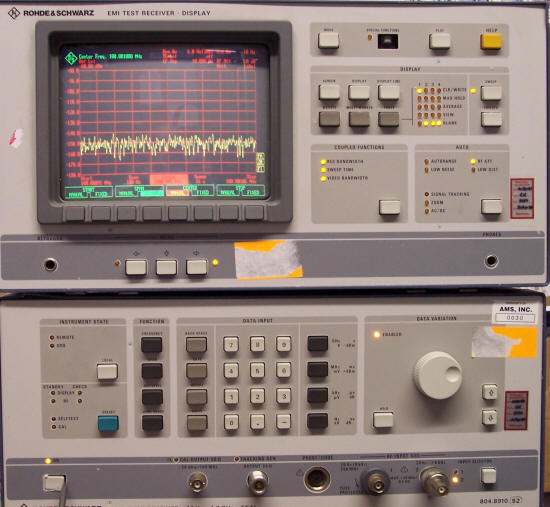
This is a model "ESAI EMI Test Receiver." An EMI test receiver is a spectrum analyzer, but with a number of added features. Devices like this are used to make sure your coffee maker doesn't interfere with your teevee, and vice versa. Pretty much any electrical product made in the past decade or so must undergo rigorous testing to make sure it doesn't emit interfering radiation, and the instrument above is used to make the acceptance measurements. Lower-priced versions of the ESAI do only spectrum analysis. In the jargon, this one is "loaded," i.e., has all the options necessary to perform some extra functions.

It's
-
A spectrum analyzer. It measures signals between 0 and 1.8GHz, i.e., normal radio and teevee bands, AM, FM, and prettty much all signals below the WiFi band.
-
A scalar network analyzer. In other words, it generates those signals at those frequencies as well, applies them to a piece of equipment, and shows whether and how much the signal is amplified or attenuated at the different frequencies.
-
A Communications analyzer. You can connect it to an antenna and actually measure the characteristics of radio signals coming in over the air. For this it has a 10dB and 20dB calibrated preamplifier.
-
A radio receiver. You even listen to the signals. It's a really, really expensive AM/FM radio.
-
An EMI test receiver. And, most critically, it makes precision radiation measurements that allow certification of manufactured equipment.
-
A computer. Albeit an old, MS-DOS one. All the above measurement functions can be automated.
I can (and will, if you let me) go on about just how wonderful this analyzer is. For example, with its built-in preamplifier, it is much more sensitive to weak signals than this HP 8568B analyzer that (new) costs only $40,000.
 |
The R&S on the left has the same input signal as the HP on the right. Note that the signal peak is over 10dB farther out of the noise on the R&S! (Each grid square represents 10Hz horizontally and 10dB vertically.) Is that spectacular performance or what? |
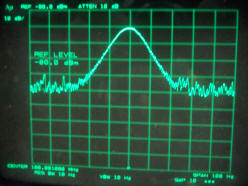 |
But I'll stop with this example because I recognize that at least a few of you aren't interested in my obsessions to this level of detail. So let's move on to the eBay portion of this blogitem.
EBay Rash
If you look at the top photo, which I took before I
cleaned the unit up, you will see a couple of orange stickers,
incompletely peeled off the panels. I call these stickers and
the all the other dings and minor problems "eBay rash." You
might also have noticed a missing button on the top row. The
little white square inside the hole is the actual electrical
control; the missing button is just decorative plastic. EBay
sellers are (I've found) generally honest people. They don't
try to hide defects, which are almost inevitably present.
Rather, they go out of the way to expose them by photograph.
That way, when you receive your item, you have no complaint.
You can't say "it's a piece of crap" because the photo already
showed you that and you bought it anyway. Genuine complaints
can only arise if an item is "not as described." The seller
touted the ESAI thus:
|
If I had received a non-working unit, therefore, I would have had no complaint. And with a starting price of $99.00, that's exactly what I expected. We already have a physically similar unit, with a different frequency range and fewer features. I figured if I could get this cheaply enough, I would have a good source of spare parts, since the unit is no longer supported by R&S.
Was I Ever Disappointed
Here I was expecting a really heavy lump of spare hardware that I could put away in the warehouse against the day it was needed. Foolishly and, it turns out, tragically, I set it up to see just what was wrong with it besides the eBay rash — the cosmetic defects the seller referred to as "smashed in a bit," not to mention all the sticker residue I would have to peel off. I was astonished to see that it powered up and seemed to function correctly. After going through a number of my own tests, I ran the ultimate one—its own self-calibration routine—with the following results:
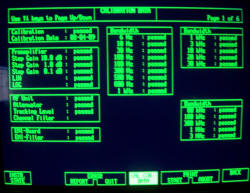 |
See all those little blurry words on the right side of
each of the boxes? Every last one of them says "passed."
So how much did I end up paying for the ESAI test receiver, list price about $100K back in the late '80s and still in fully functional condition? Nobody bid against me. Total cost $99.00, or about a mil on the dollar. Even I, used to paying anywhere between a penny and ten cents on the dollar, was stunned. But I can take solace in at least one thing. No matter how good a deal one gets on an eBay purchase, there will always be an issue of one sort or another. |
 |
In this case, the seller was, at least in part, correct.
The unit did not work right away, and I had to repair it.
Fortunately, I'm skilled in the electronic arts, and was
able to repair the ON / OFF switch as shown in the picture.
I didn't even need the manual, which is a good thing since
I'm still looking for one. If you have any doubt as to whether I consider this still to be a good deal, refer to the blogitem title. |
|
Special Advertising Section Please buy this lovely blue Corvette ZR1! Now, with Collector's Kit |
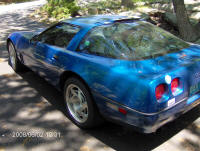 |
|
NP: |
|
TotD Remember "Radar Love" ? I was tired of that song after about five playings, and I'm still tired of it. But I'm not tired of the shirt — I just found it after it spent a decade in hiding. |
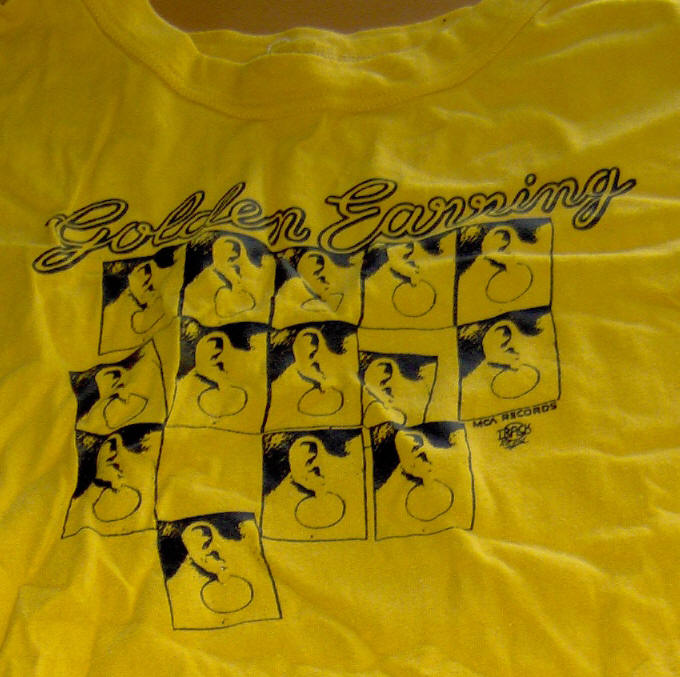 |
| © 2009 |
| Richard Factor |
